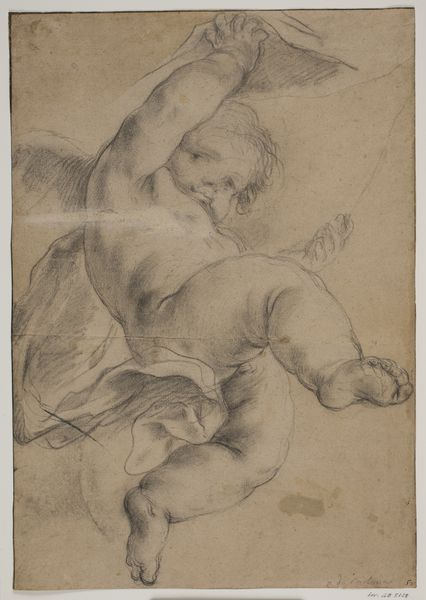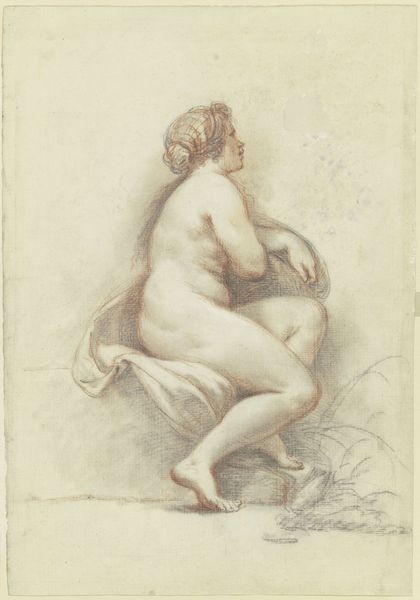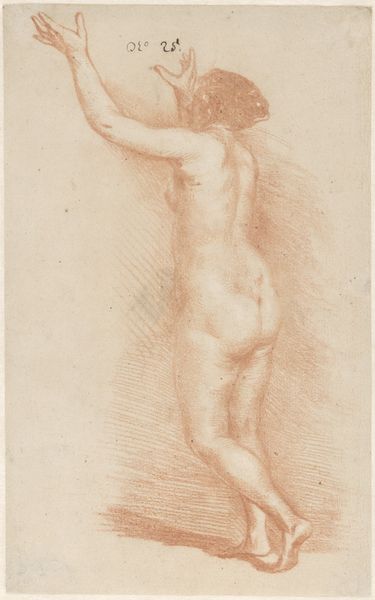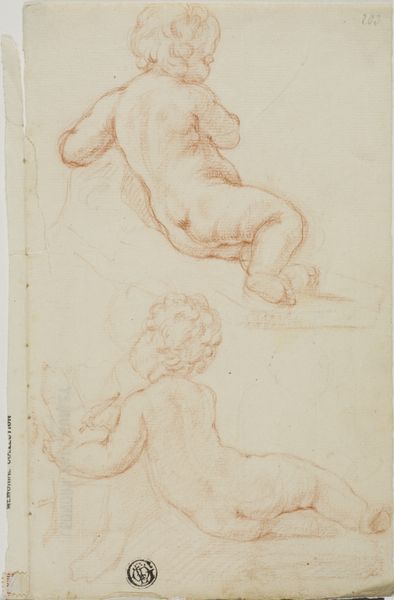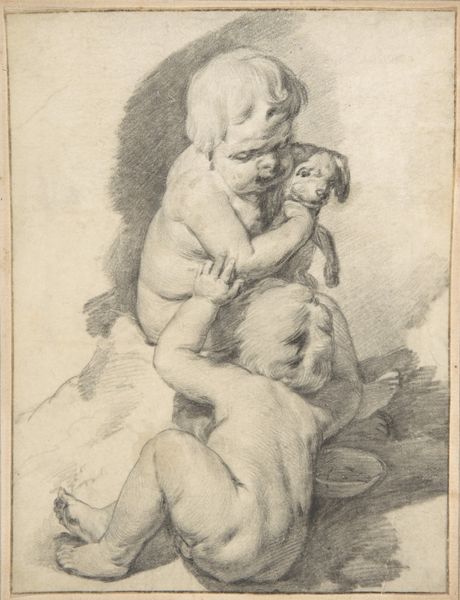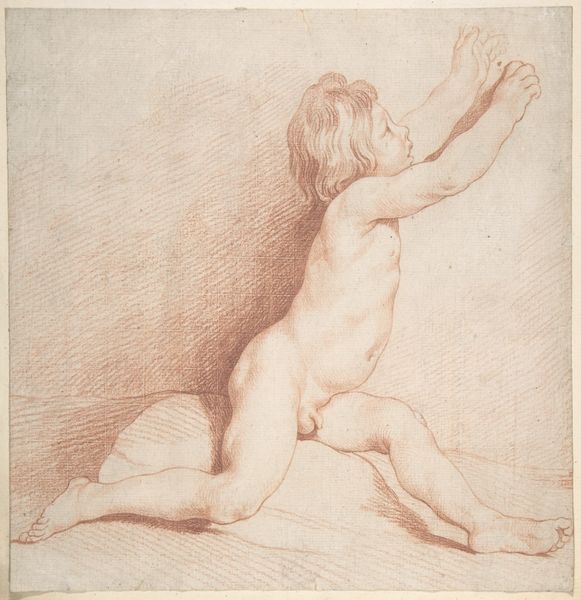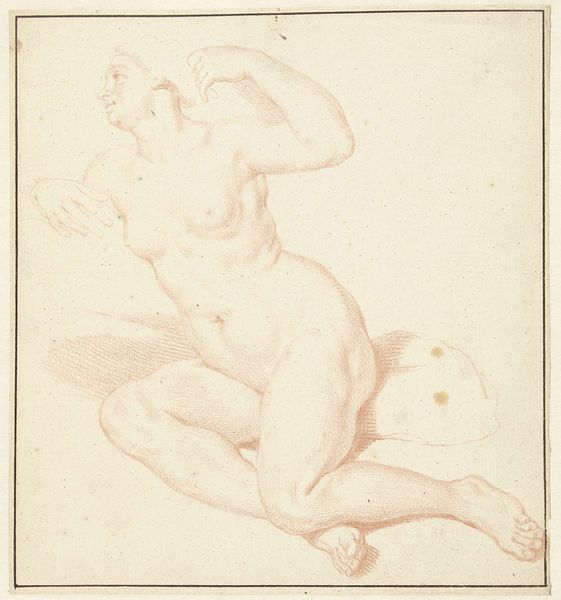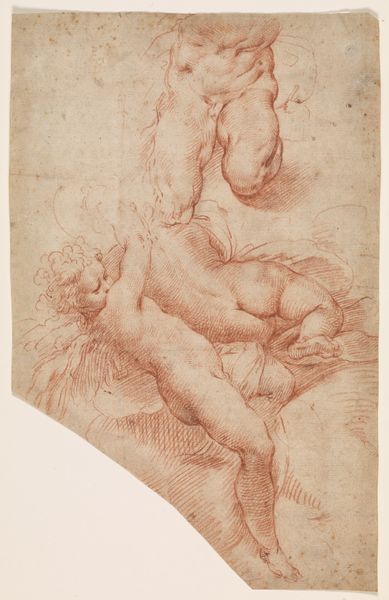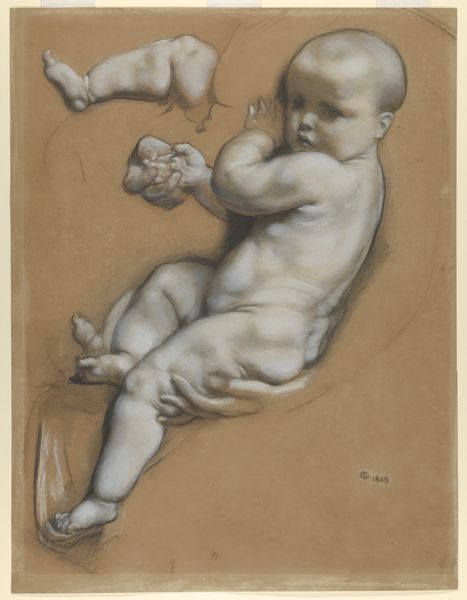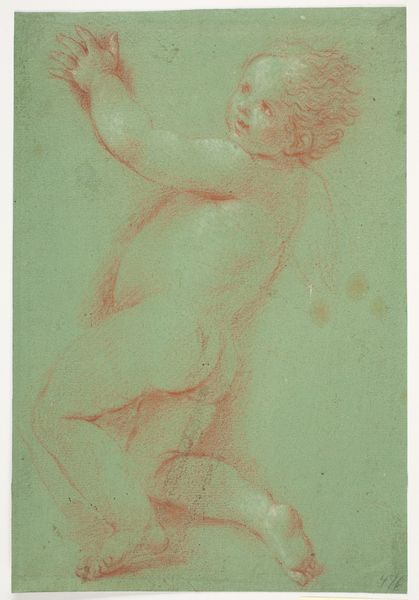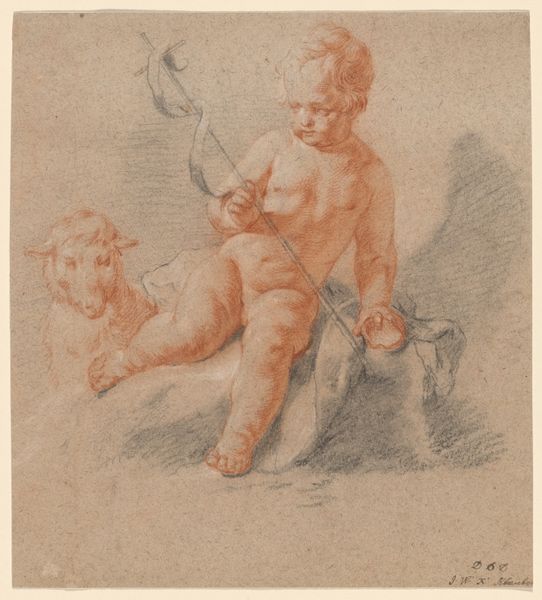
drawing
#
drawing
#
baroque
#
figuration
#
portrait drawing
#
academic-art
#
nude
Dimensions: 10-11/16 x 8-5/8 in. (27.1 x 21.9 cm)
Copyright: Public Domain
Curator: Immediately striking! There's a cherubic energy here, though the gray palette lends a seriousness I didn't expect. Editor: This drawing, aptly titled "Cherubs," dates to sometime between 1600 and 1700. While the artist remains anonymous, it resides at the Metropolitan Museum of Art. I think you're right, the academic approach creates a melancholic tension within an image typically associated with jubilation. Curator: Absolutely. Cherubs often symbolize divine love and innocence, especially in religious art. I’m particularly drawn to how the artist captured the one cherub’s upward gaze—a literal embodiment of aspiration. Note the play of light and shadow—the face is soft, but defined. This imparts a spiritual yearning. Editor: And let's consider what this aspiration *means* historically. This falls within the Baroque period. There's this counter-reformation drive, to appeal to emotions, to connect earthly struggles with grand, sweeping heavenly narratives. It’s interesting how that works out visually. The artist makes you think about these figures in real time and space with the clever use of charcoal or gray chalk on laid paper. They look tangible. Curator: A fascinating point. The cherub's vulnerability is pronounced by that groundedness, in this moment, almost pleading or reaching. Its nakedness certainly accentuates vulnerability but perhaps indicates purity as well, depending on how you interpret it. It definitely avoids idealizing. Editor: Right, that stark realism almost clashes with our present-day views of cherubs as sweet or innocent figures. The Baroque period understood human form differently. By showing these “angels” with weight and shadow, does it, perhaps, reflect the very tangible political weight these theological notions carry during these turbulent times? And look closely, is that the head of another cherub just in outline? It makes me consider all the bodies present or absent. Curator: That addition definitely lends an ethereal quality but grounds it within the confines of the physical paper as well. That tension again! I’m left wondering what vision moved this artist, to convey devotion so frankly. Editor: Perhaps reflecting on how these conventional forms were reimagined gives us some tools to renegotiate the loaded symbols of our present too. What feels outdated can surprisingly resonate!
Comments
No comments
Be the first to comment and join the conversation on the ultimate creative platform.
